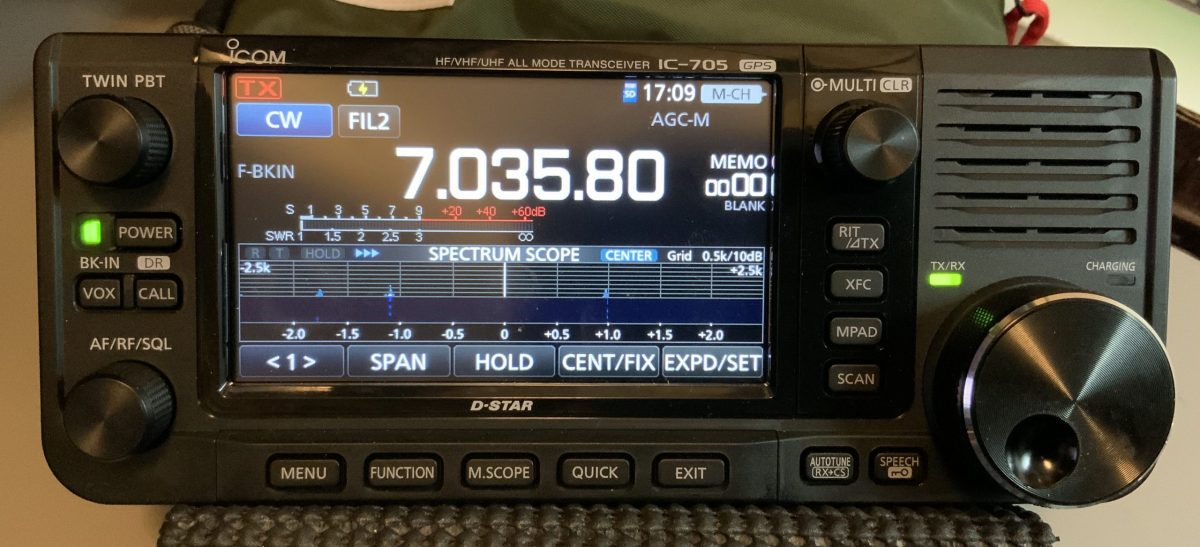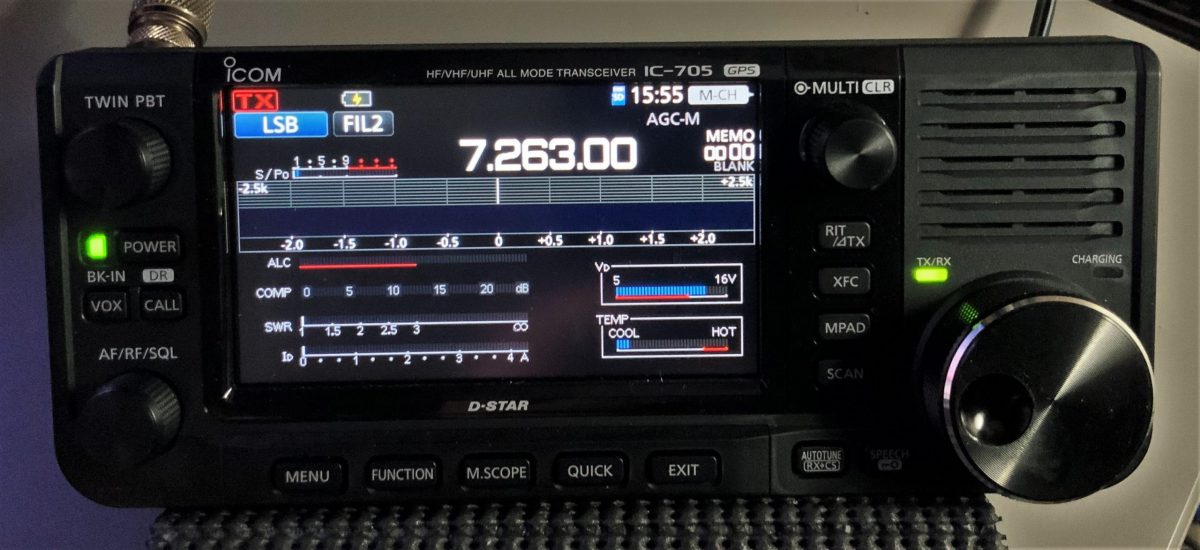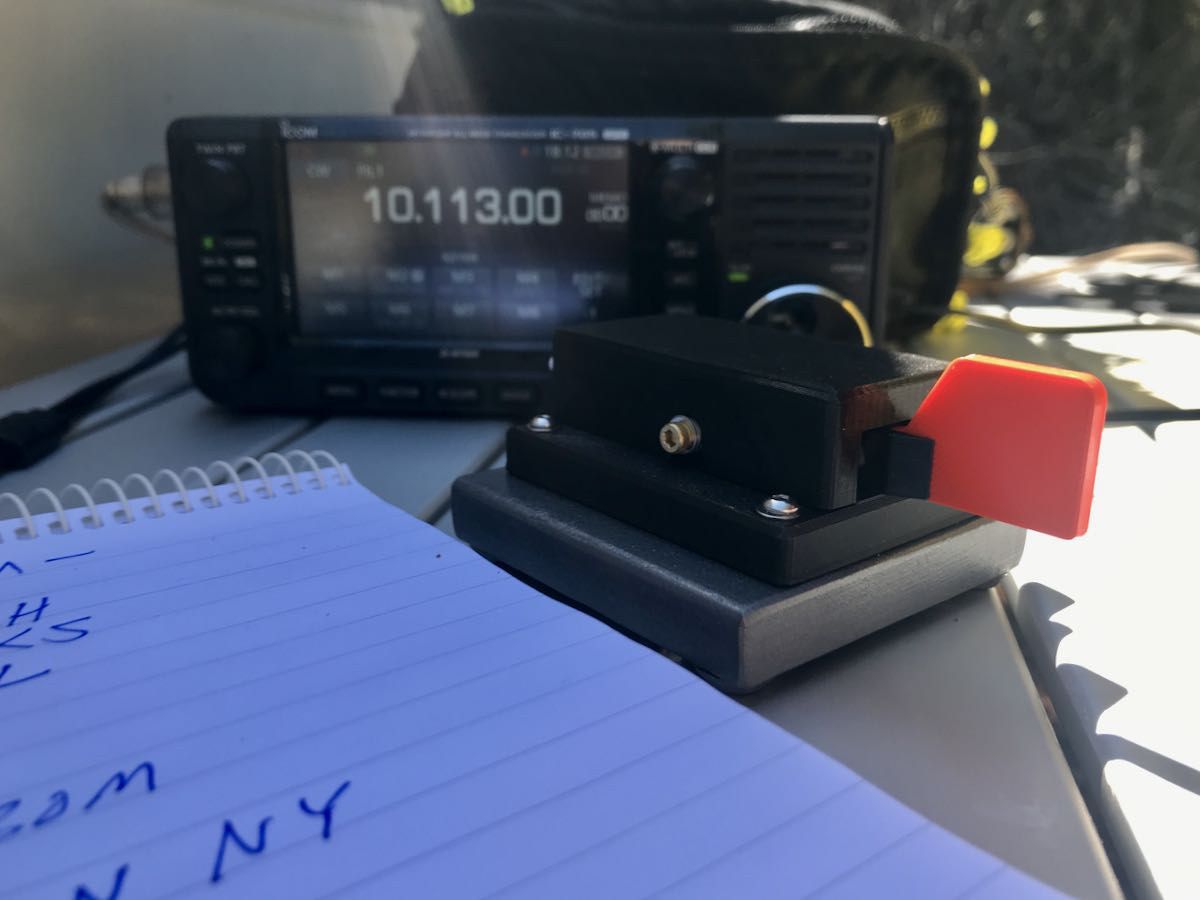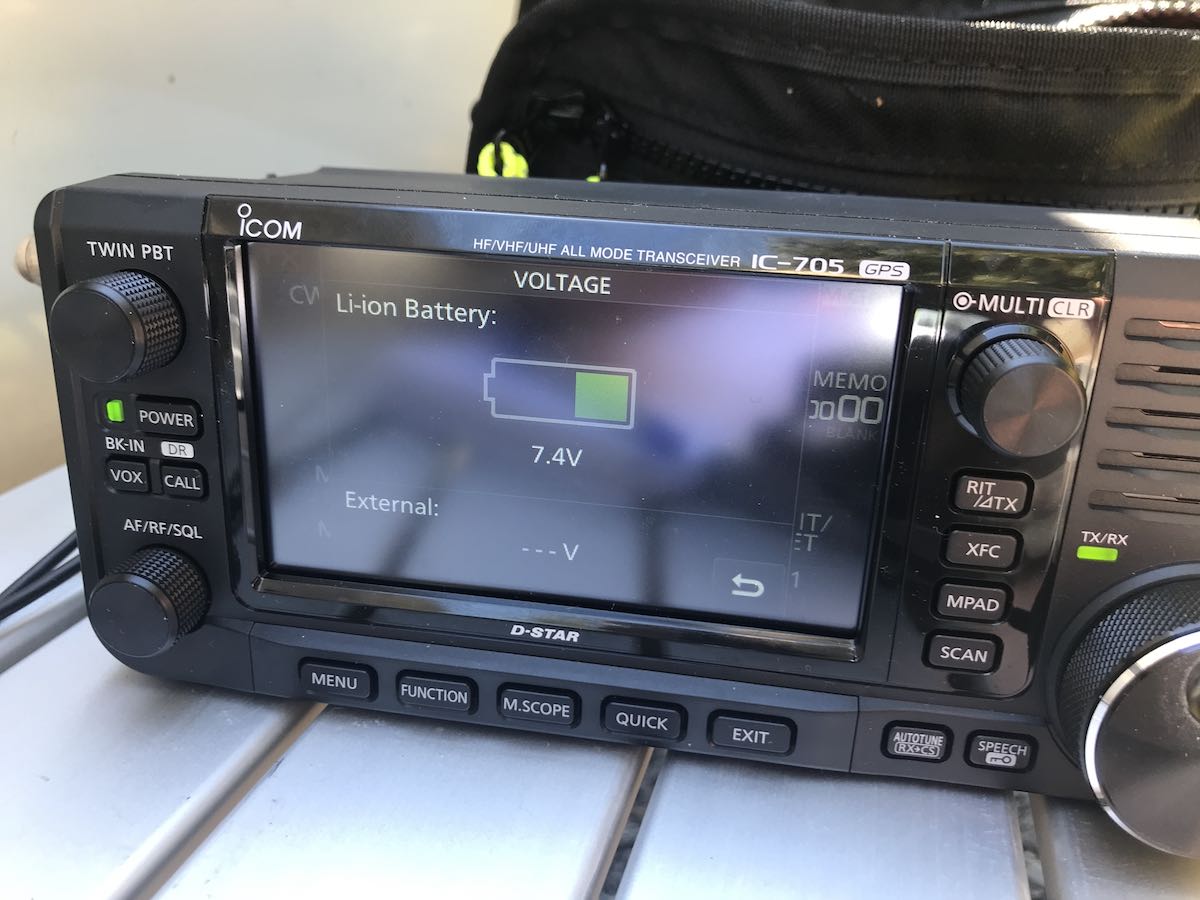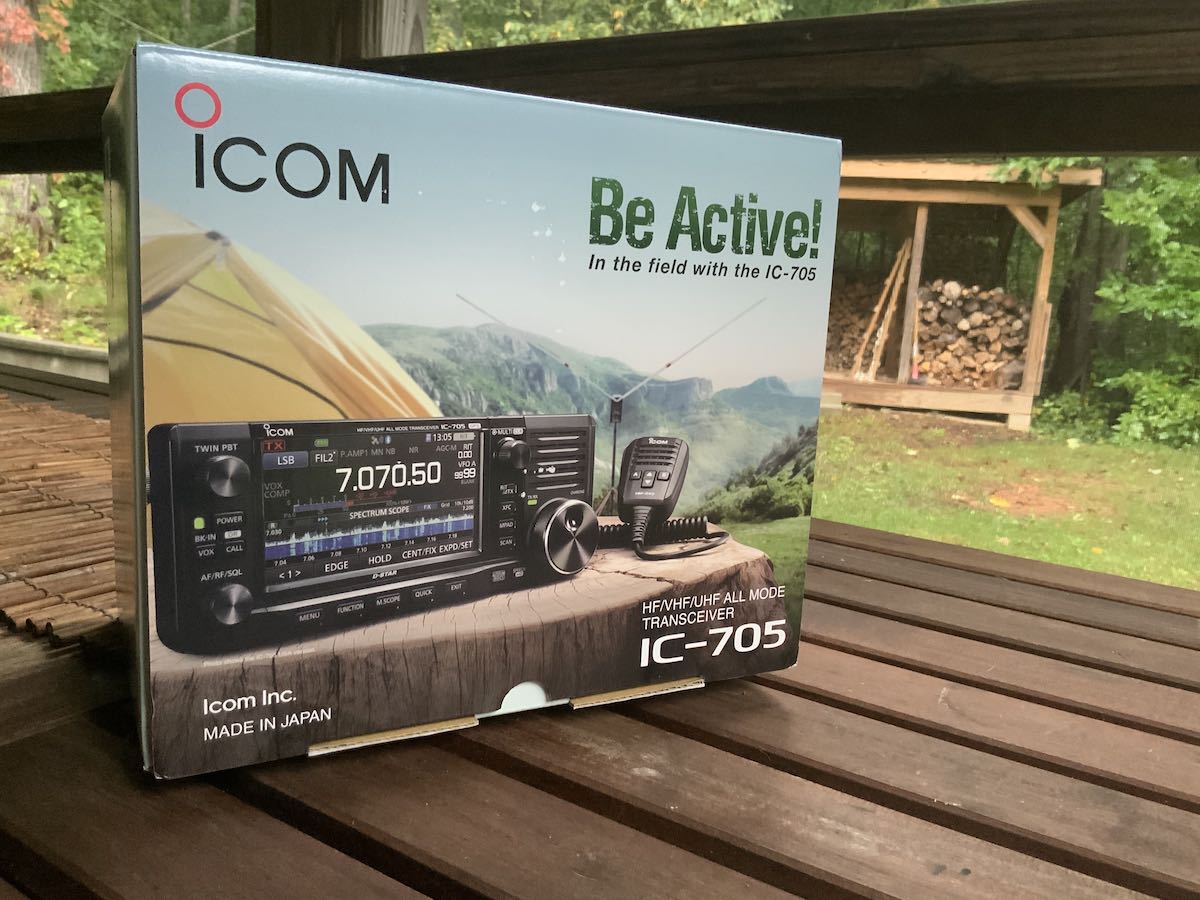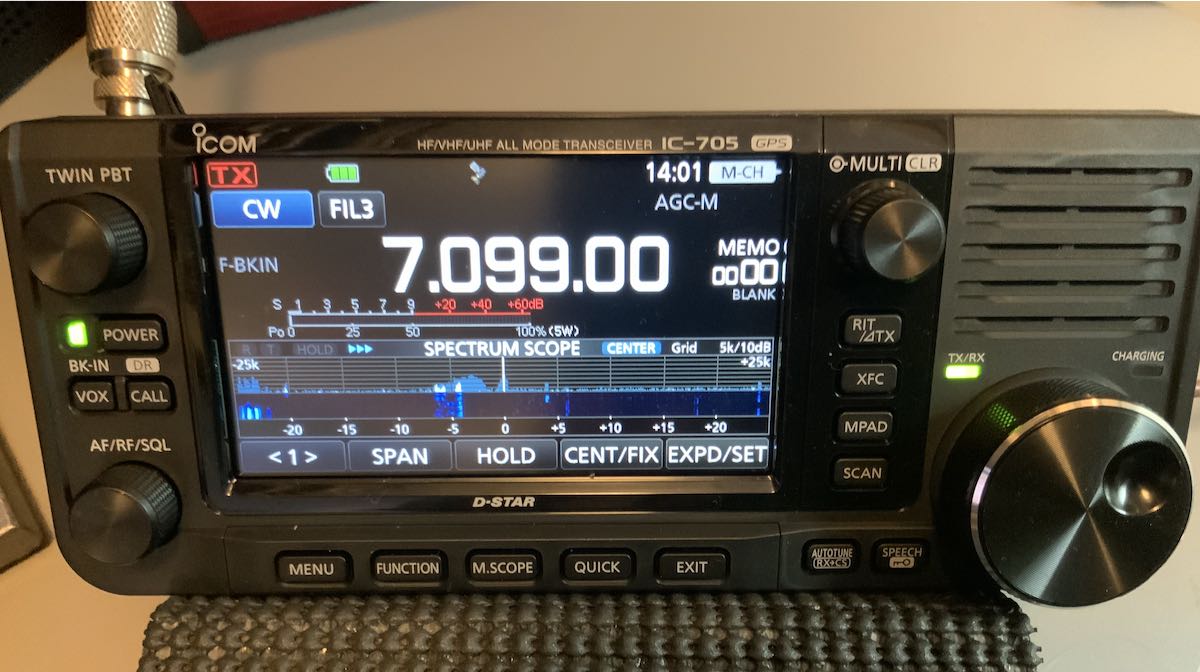
The shortwave radio listener part of me might actually be more excited about the Icom IC-705 than the ham radio operator part of me.
The IC-705 has a number of features for ham radio operators who also enjoy broadcast listening. For example, it sports:
- a general coverage receiver,
- good performance specs,
- notch filtering (both manual and automatic),
- Icom twin passband filtering,
- an AM bandwidth filter maximum width of 10 kHz
- built-in digital recording of both received and transmitted audio,
- audio treble/bass adjustments,
- and battery power from Icom HT Li-ion battery packs
The Icom IC-705 ships with an BP-272 Li-ion battery pack and since the announcement last year about the IC-705, I’ve been curious how long the BP-272 could power the IC-705 in receive only.
A real-world RX test
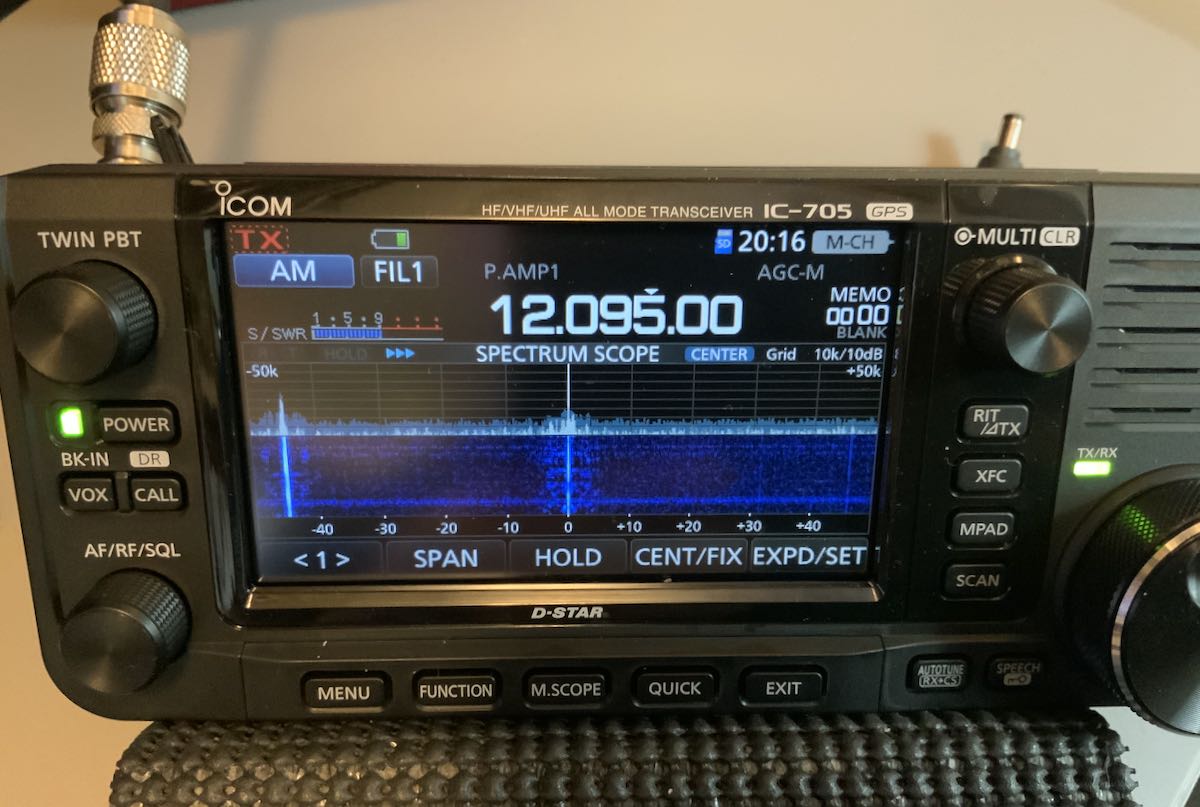 Yesterday morning, I resisted the urge to hunt POTA and SOTA stations with the IC-705 and, instead, spent the day simply listening.
Yesterday morning, I resisted the urge to hunt POTA and SOTA stations with the IC-705 and, instead, spent the day simply listening.
I started the experiment with a fully-charged BP-272 7.4V 1880 mAh battery pack (the pack supplied with the IC-705). At 9:00 in the morning, I unplugged the IC-705 from my 12V power supply and ran the receiver all day on just the battery pack.
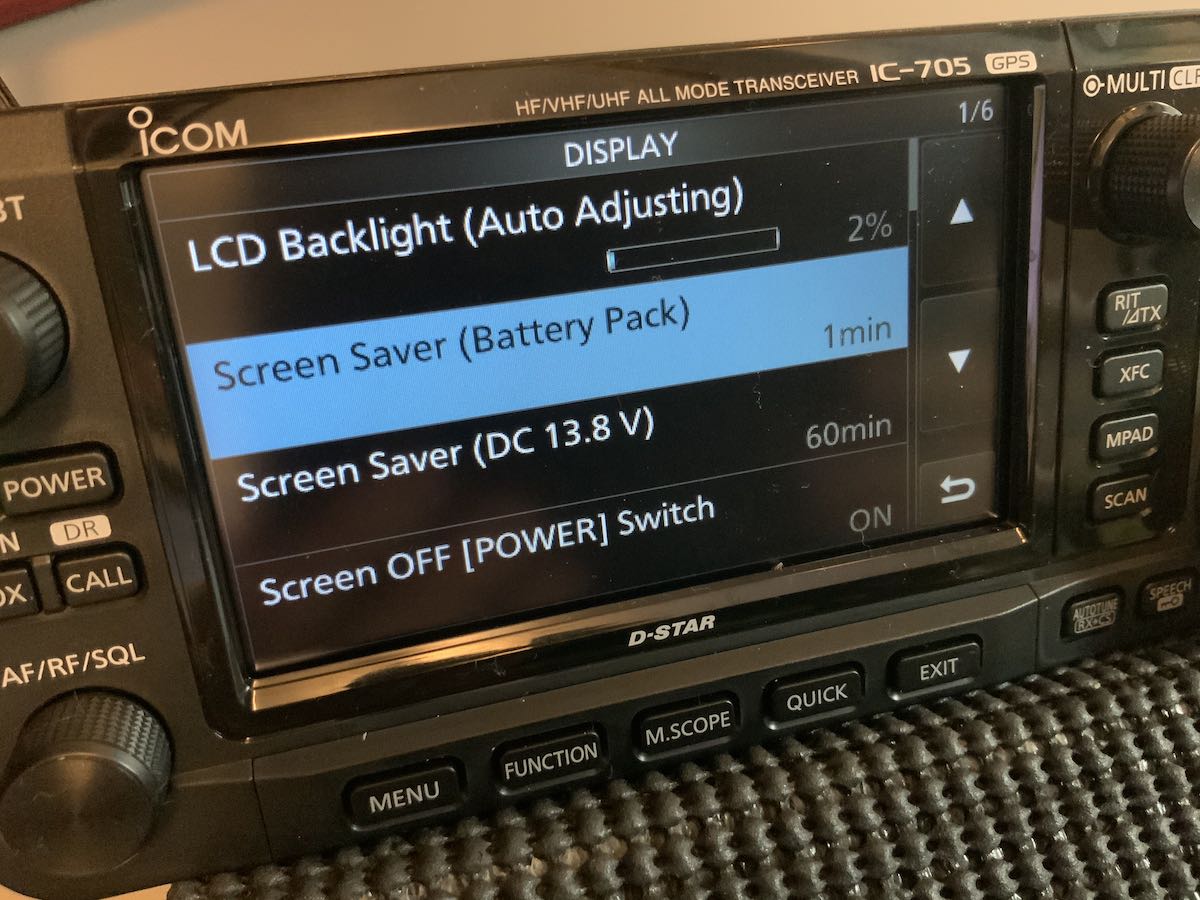 I made some practical changes to maximize play time: I turned on the screen saver, turned off GPS, set the LCD backlight auto adjustment to 2%, and set the screen timer to turn off after 1 minute.
I made some practical changes to maximize play time: I turned on the screen saver, turned off GPS, set the LCD backlight auto adjustment to 2%, and set the screen timer to turn off after 1 minute.
I ran the volume somewhere between low and moderate and only raised it to what I would consider very loud a few times to copy weak signals. I listened to AM, SSB, and FM signals across the spectrum, but primarily cruised the HF bands.
Of course, I never transmitted with the IC-705 during this period (saving that for the next test).
I probably could have done more to decrease current drain, but frankly I wanted this to be based on how I’d likely configure the rig for use on an SWL DXpedition.

Results
I unplugged the IC-705 from the 12V power supply at 9:00 local and the radio auto shut down at 16:39 local: a total of 7 hours, 39 minutes.
Honestly? I’m fairly impressed with this number mainly because it’s based on the smaller battery pack. The supplied BP-272 pack has 1880 mAh of capacity. The optional BP-307, on the other hand, has 3150 mAh of capacity.
If I decide to keep the IC-705, I will be very tempted to purchase a ($130 US) BP-307 pack as well.
Next test: How long can the IC-705 last on battery during a POTA activation?
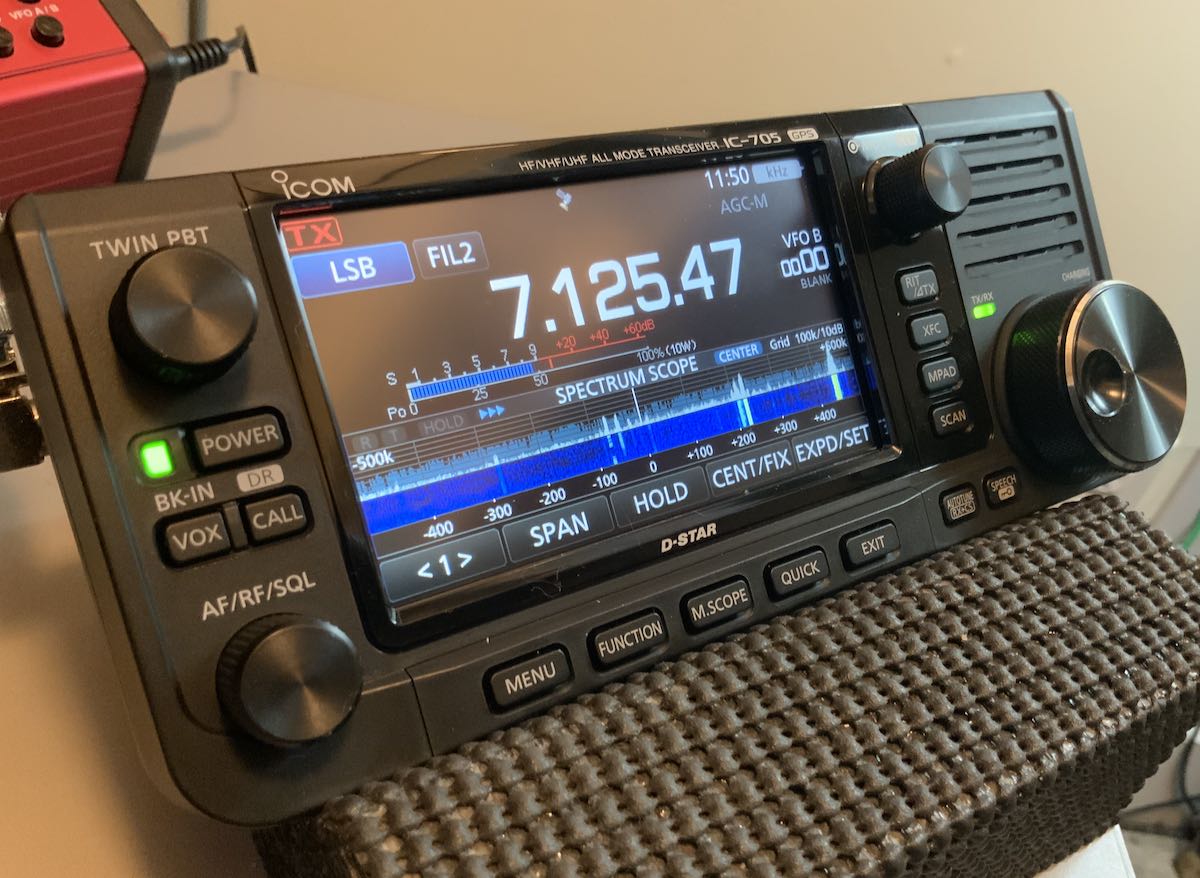
As early as today, I will see just how long the BP-272 pack can operate the IC-705 during a POTA activation. This will be a true challenge on the smaller battery pack since POTA activations require a lot of transmitting (constant CQ calls and exchanges). There’ll be no lack of calling CQ on a day like today when propagation is so incredible poor.
Follow the tag IC-705 for more updates.


